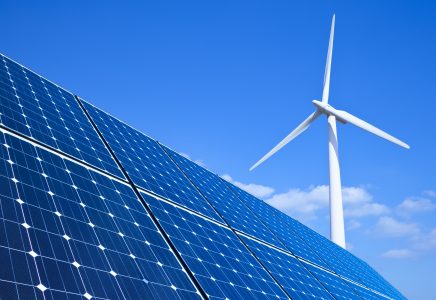The Emissions Cap—Will there be enough green energy to go around?
 The Big Apple is known for its beautiful skyline and architecture—but these buildings will go through some major changes in the next couple of months. On Earth Day, Mayor Bill de Blasio signed legislation that requires buildings 25,000 square feet or larger to cut greenhouse-gas emissions 40% by 2030. There are just about 50,000 buildings in the city that are subject to these new rules, and these buildings account for about a third of the cities carbon footprint. The city has a goal to reduce carbon emissions by 80% by 2050.
The Big Apple is known for its beautiful skyline and architecture—but these buildings will go through some major changes in the next couple of months. On Earth Day, Mayor Bill de Blasio signed legislation that requires buildings 25,000 square feet or larger to cut greenhouse-gas emissions 40% by 2030. There are just about 50,000 buildings in the city that are subject to these new rules, and these buildings account for about a third of the cities carbon footprint. The city has a goal to reduce carbon emissions by 80% by 2050.
How They Will Achieve These Goals
Now that this legislation has been put into place, this is going to bring a challenge for landlords to find low-carbon or emissions-free electricity. The only option for many landlords is going to be to plug their buildings into green power sources through the grid. The legislation establishes caps on the amount of greenhouse-gas emissions permitted per square feet.
“This will be the largest disruption in the history of New York City real estate,” said John Mandyck, the chief executive officer of the Urban Green Council. “Buildings will have to do deep energy retrofits or buy green power or eventually look at carbon trading. We get that it’s tough and that billions of dollars will need to be spent to reduce carbon emissions. But new technology and new business models will be invented to help buildings get there.”
What This Means For Renewable Energy
The city is targeting 1,000 megawatts of solar installed by 2030, and 500 megawatts of battery storage by 2025. “This legislation was critical to building demand for a greener grid in the city,” explained Mandyck. “And where there’s demand, supply will follow. The council effectively primed the pump.” Currently, there are 154 megawatts of solar generation in the city with no significant battery storage capacity—which is partly due to the FDNY prohibiting lithium batteries due to fire risks.
As one of the most populated cities in the world, New York City will help to lead the way for green energy. Not only are green energy solutions good for the environment, but they can help your bottom line. At Intersect Energy, we provide alternative energy solutions for commercial and industrial companies alike. If you are looking to reduce your environmental impact and maximize your savings, Intersect Energy is here to help. Contact the team at Intersect Energy today! Don’t forget to stay up to date with all the latest news in the renewable energy industry by following us on LinkedIn.
 Pennsylvania’s two energy giants—natural gas and nuclear power industries—have been pitted against each other in the debate over the state’s proposed $500 million nuclear rescue package. Renewable energy advocates believe they hold the swing vote and are requesting a seat at the table to determine if this bill will pass. Let’s take a deeper look at the specifics of the plan and what it means for the energy industry moving forward.
Pennsylvania’s two energy giants—natural gas and nuclear power industries—have been pitted against each other in the debate over the state’s proposed $500 million nuclear rescue package. Renewable energy advocates believe they hold the swing vote and are requesting a seat at the table to determine if this bill will pass. Let’s take a deeper look at the specifics of the plan and what it means for the energy industry moving forward.